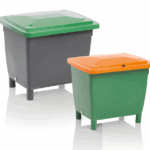If you are unsure how to deal with a pest infestation, you can do a little research online. Learn about the pest’s needs and habits. Then you can decide whether action is necessary. There are various ways to deal with a pest infestation, including natural methods and Integrated pest management. Also, consider insects’ predators and non-chemical methods. also, contact Australia’s best pest control company for pest control services.
Non-chemical pest control measures
If you’re in the market for a pest control solution, consider non-chemical methods. While chemicals can be effective, they can also be hazardous to people and the environment. Fortunately, there are many non-chemical methods available. One of the most common and effective is trapping, which captures the animals alive. This is the safest and most environmentally friendly way to exterminate pests. Read on to learn about these methods.
Some food processors and large retailers are implementing “green” practices to avoid chemical use. These “green” methods are designed to be more environmentally friendly and use fewer pesticides. While this is a welcome trend, the pest management industry has largely applauded this development. This trend has led to a more integrated approach to pest management. These approaches combine biological and non-chemical approaches to control pests.
Visit, atpmspest.com.au for pest control services they are the best pest control company in Australia.
Chemical pest control
There are several advantages to using chemical pest control strategies. These strategies do not harm the environment, but they can disrupt the habitat of the targeted organism. Each pest species has a unique habitat, and their actions can affect the wellbeing of many other organisms. By disrupting this balance, pest control strategies can be ineffective. For these reasons, it is essential to use methods that do not cause a corresponding imbalance. Here are some of these strategies.
Various chemical pesticides are used to eliminate pests. Some of them are meant for rodent control, while others work by causing hemorrhaging and dehydration. Some chemicals are designed to control plant growth and influence the behavior of pests. Many of these chemicals are fast-acting and have the ability to control different life stages of pests at once. Chemical pest control methods have several benefits, and are an essential tool for a pest-free home.
Also Read: Traps Using for Pest Control
Integrated pest management
Integrated pest management for pest control consists of using various methods of plant protection and integrating them to prevent the spread of pests. Among these methods are integrated pest management techniques, which reduce the risks of plant and animal health while encouraging the use of natural pest control methods. Besides, Integrated Pest Management for pest control also includes protection of important ecosystem infrastructures. In addition, this type of pest management focuses on minimizing the impact of human health on the environment and the ecosystem.
Integrated pest management for effective pest control is an effective way to prevent and treat pests. It utilizes a combination of natural and chemical methods to reduce the risk of pest infestations. It also incorporates non-toxic techniques to control pest populations and uses judicious levels of pesticides when necessary. The benefits of integrating multiple methods of pest control are many and include reduced pesticide use, improved human health and the environment.
Insect predators
Natural enemies of pests include parasitoids, predators, nematodes, and microbes. Predators feed on their prey and may be beneficial or harmful, but they do not have an egg-laying structure like other insects. Parasitoid pests feed only on a single host and are often harmless. Biological control of pests requires accurate identification of these natural enemies. Insects are known to be both beneficial and detrimental to humans.
Natural predators of pests may be beneficial for agronomists. For example, Larra bicolor, which parasitizes mole crickets, may stay on a plant’s flowering stem overnight to feed on its nectar. Some plant species are particularly attractive to insect predators, such as buckwheat, goldenrod, shasta daisy, aster, and tickseed. Among the family of plant parasitoids, Apiaceae, Rutaceae, and Salicaceae have been found to host high numbers of predatory bugs.
Mechanical controls
Mechanical controls for pest control are a form of physical management for pests. These methods vary and often include weeding and temperature changes. Many farmers are trying to find sustainable pest removal methods. Mechanical controls for pest control are a growing trend in agriculture. In the United States, farmers are using mechanical controls to control a number of pests in their fields. But these methods are expensive and not always sustainable. Here are a few things to consider before using mechanical controls for pest control.
Mechanical controls are the most common type of pest control method. They are effective for a wide variety of pests, including those that feed on leaves and flowers. Mechanical is also quick and effective for small-scale problems. They are well-suited for use in conjunction with biological and physical controls. For example, mechanical controls can be combined with the use of vacuums, tillage, cutting, and mowing. Mechanical controls are an effective way to control a variety of pests without affecting beneficial organisms.
Chemical pesticides
There are many types of chemical products for pest control, ranging from over-the-counter sprays to specialist treatments. However, choosing the right product can be tricky, especially if you don’t know the species. Misidentifying the pest could result in a chemical failure or even the development of a resistance to the product. Pesticides are designed to kill pests and include insecticides, herbicides, fungi and mold control, and rodenticides. These chemicals can be used on a wide range of household pests, including mice, rats, and cockroaches.
Fortunately, a variety of natural enemies of pest species can help keep pest populations to a minimum. Among these are predators, parasites, and competitors. Aphids have several natural enemies, including aphids, which help keep their numbers in check. Chemical pesticides, on the other hand, are typically broad-spectrum and non-selective, which can be detrimental to beneficial species. Additionally, they often cause a pest population resurgence if applied in high concentrations.







